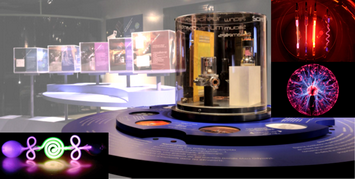Underground Laboratory LSM
The Underground Laboratory LSM (le Laboratoire Souterrain de Modane) represents one of the five European deep underground scientific laboratories located in the Fréjus road tunnel (Modane, Savoie, France). Importance of such infrastructure is based on environment with extremely low levels of background ionizing radiation.
The Underground Laboratory LSM was jointly operated by the French Centre National de la Recherche Scientifique (CNRS) and the Commissariat à l'Énergie Atomique (CEA - until 2015) in partnerhip with the Université Grenoble Alpes (UGA) since 1982. In October 2005 the Joint Underground Laboratory in Europe (JoULE) agreement was signed with the Joint Institute for Nuclear Research (JINR) in Dubna. The LIA-JoULE (Laboratoire International Associé) is dedicated to research in the areas of neutrino properties, dark matter, and ultra heavy ions. In beginning of 2009 it has been extended with new participants: the Russian Foudation for Basic Research and the Czech Technical University (CTU) in Prague. In the frame of this agreement the LSM receives every year 10 kEUR from Institute of Experimental and Applied Physics, CTU in Prague and 30 kEUR from JINR as annual contribution to the LSM budget.
The LSM covers progressive long-term research areas - fundamental particle, astroparticle and nuclear physics (studies of neutrino properties, dark matter search, proton decay), multidisciplinary branches (climatology, geoscience, radiobiology, archeology, radioecology) and applied research (HPGe spectroscopy, microelectronics, semiconductor detectors).
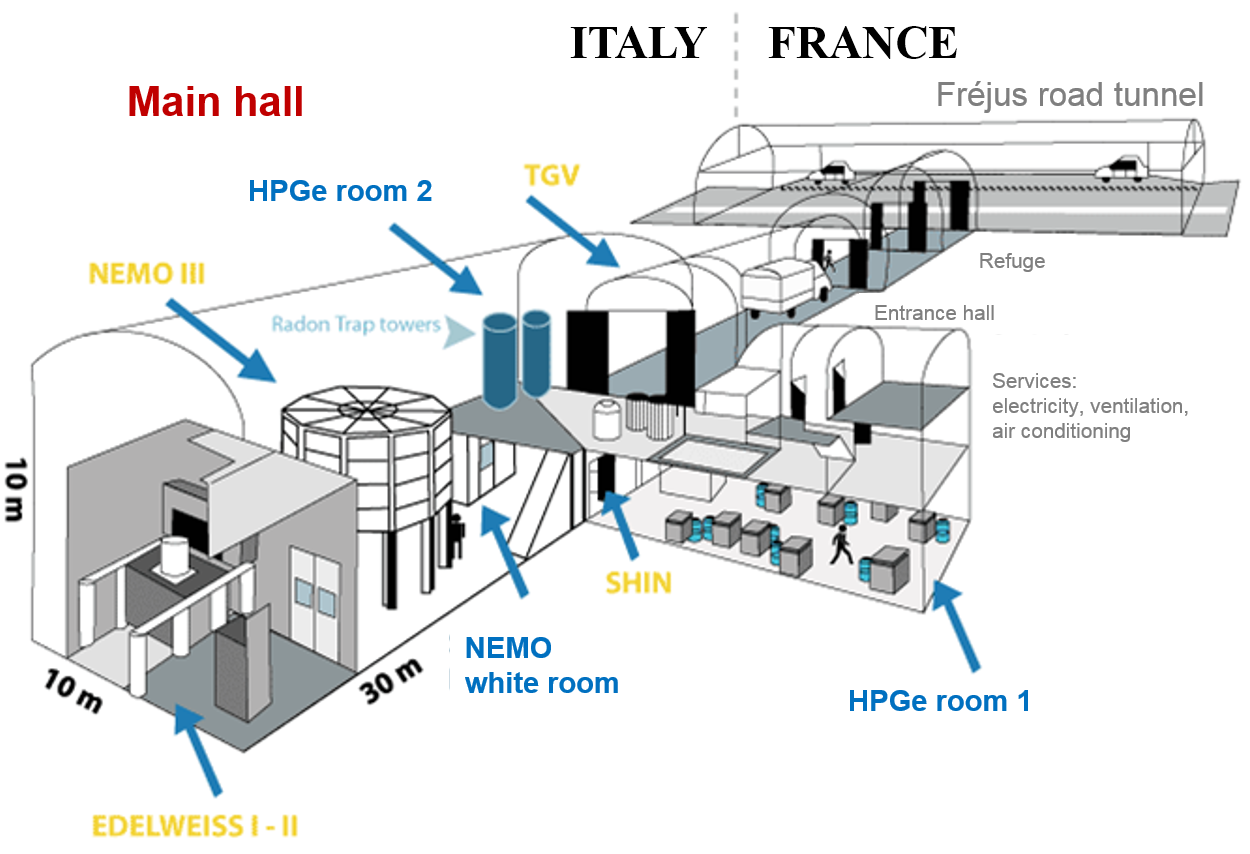
Future plans
Plans for future extension of the Underground Laboratory LSM, project DOMUS (Deep Observatory for Multidisciplinary Underground Science), which will give the possibility for installation of bigger detectors in neutrino physics, dark matter detection, nuclear physics or proton decay are proposed. DOMUS (4 times bigger in volume than the existing laboratory) will need more infrastructural equipment, which is planned to be centralized (not distributed for every detector) for whole laboratory.
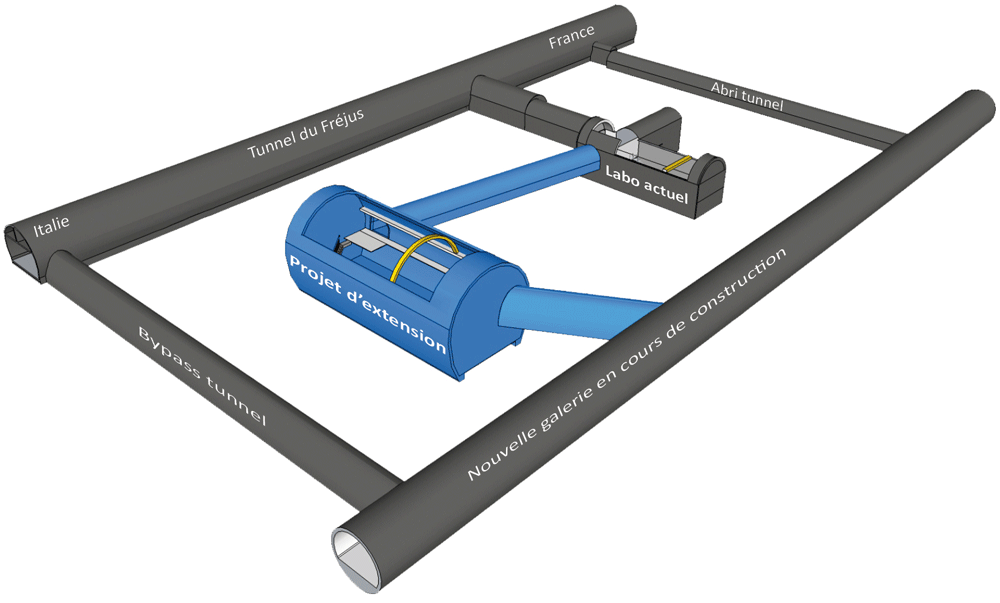
Basic facts
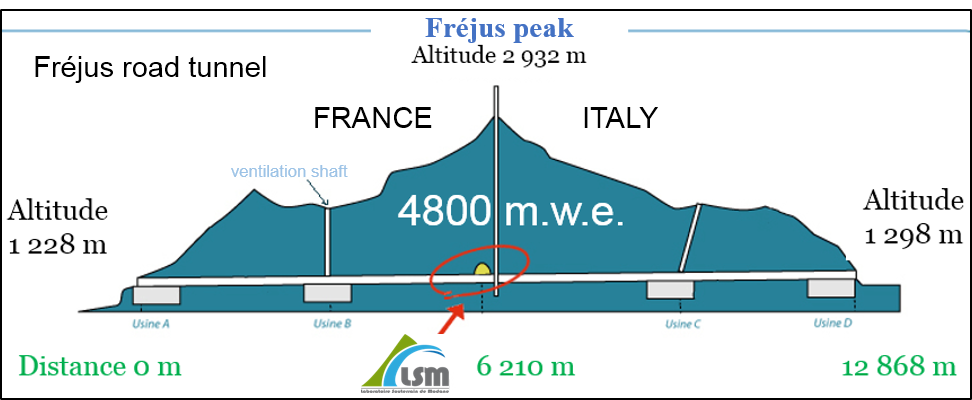
- Operation: since 1982
- Depth: 4 800 m.w.e.
- Surface: 400m2
- Volume: 3 500 m3
- Access: horizontal
- Users: 150 - 200
- Muon flux: 4 x 10-5 μ.m-2.s-1
- Neutron flux: 4 x 10-2 n.m-2.s-1(fast) and 1.6 x 10-2 n.m-2.s-1 (thermal)
- Radon: 15 Bq.m-3
LSM Research Infrastructure provides:
- external facility (offices, workshops, outreach space and guest rooms)
- underground laboratory
- all types of shielding
- anti-radon facility (providing Rn free air with mBq.m-3)
- 16 HPGe detectors
- clean room
- workshops (electrical, mechanical and chemical)
- computing centre
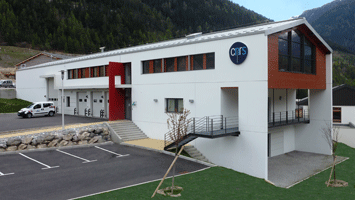
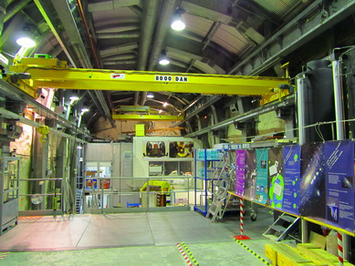
Use of the Research Infrastructure:
Czech Republic, France, UK, Germany, Russia, USA, Spain, Slovakia, Chile, Japan and Ukraine
Publication output:
Over 100 refereed scientific publications over 5 years

